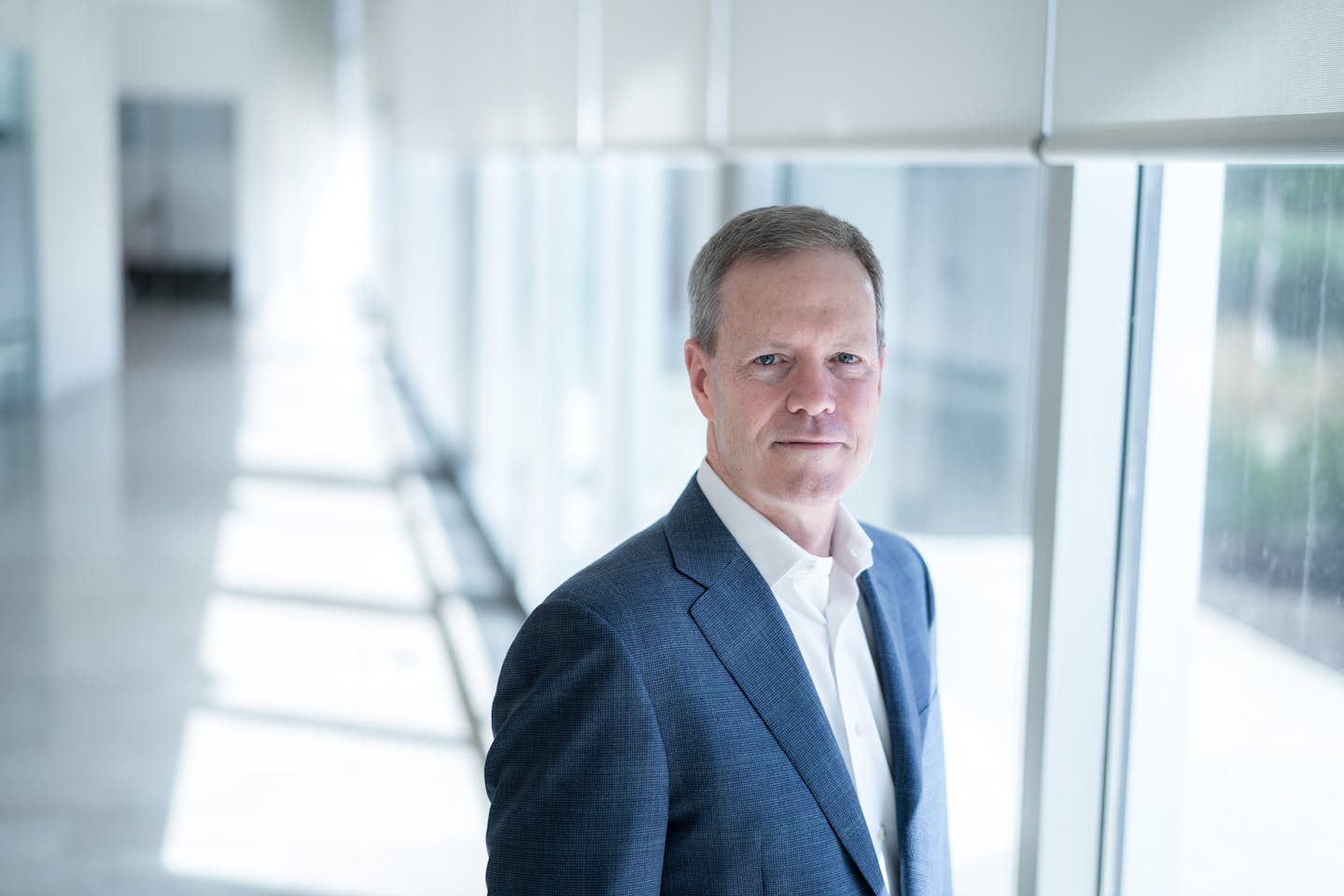3M plans to spin off its $8.6 billion health care business, a move meant to sharpen its focus and boost profitability.
While not a complete breakup like those proposed by industrial peers General Electric and Toshiba, the decision announced Tuesday will profoundly reshape Maplewood-based 3M and chart a new course for its yet-to-be-named health care spinoff.
"It's a great opportunity for both businesses," chief executive Mike Roman told the Star Tribune. "Actively managing our portfolio really helps us complement the value we create with our innovation and the businesses that we build."
The health care business accounts for a quarter of 3M's revenue. Products include bandages, regulated medical devices, oral care and health care IT.
Once complete, the 3M health care spinoff will be the third-largest medical technology company in the state after Medtronic and Boston Scientific.
The remaining company, which will keep the 3M name, last year posted $26.8 billion in sales across its other segments: safety and industrial, consumer, transportation and electronics. The company will have a 19.9% stake in the health care spin-off that it will sell off over time, company leaders said.
Roman told employees Tuesday that, for the time being, little will change. 3M has more than 90,000 global employees and about 10,000 in Minnesota.
"There were a lot of questions about next steps and how we go forward," he said. "What happens to employees, the name of the business, the locations and the buildings for those businesses will be decided over the next 15 to 18 months."
At nearly $9 billion in revenue, the spinoff would fall between Hormel and Polaris at No. 13 on the Star Tribune's annual public company ranking — if it is headquartered in Minnesota.
The separation is expected to be complete by the end of 2023.
The move follows other industrial conglomerates, such as General Electric and Johnson & Johnson, that recently announced plans to break apart various segments into different companies.
A recent Datasite survey found 25% of more than 540 global dealmakers expect an increase in divestitures, carve-outs or business exits in the next 12 months as companies look to shore up cash for uncertain times, said Mark Williams, Datasite's Americas chief revenue officer.
Many investors view such moves as a way to unlock a particular segment's trapped value that might be buried beneath a corporation's mountain of disparate priorities.
Analysts largely lauded 3M's planned spinoff Tuesday, but questions remain over how the new businesses will fare.
"This is a stable, low growth, profitable business," Wolfe Research analyst Nigel Coe wrote about the health care business. He added the decision to spin it off "is some acknowledgement of the need for cash."
In recent weeks, 3M's stock has been trading at its lowest levels in nearly a decade. Shares rose 5% Tuesday, closing at $140.82.
"We have positioned health care to be successful as a stand-alone enterprise," Roman told investors Tuesday morning. "Both companies will sharpen their focus to continue investing and winning in global end markets and have greater flexibility to strategically deploy capital, drive innovation and accelerate growth."
The planned spinoff also comes less than three years after 3M grew its health care business with its largest ever acquisition, the $6.7 billion purchase of medical device company Acelity.
For most of its 120-year history, 3M has focused on acquiring businesses — growing and evolving from an abrasives manufacturer to the major industrial supplier and consumer products maker it is today.
But in recent years, 3M has been divesting more than acquiring. In addition to a still-pending sale of its food safety business, 3M has offloaded 15 businesses in the past decade, according to Mergr, a mergers and acquisitions database.
One of the company's largest spinoffs created Imation in 1996.
After the spinoff, 3M will retain PFAS and earplug litigation liabilities, which are seen as a major drag on the company's bottom line and stock.
3M saw sales and profitability slip across all of its divisions this spring compared to the year before. Revenue for the company's second quarter, which ran April through June, totaled $8.7 billion.
The company's profit was almost entirely wiped out by Combat Arms and PFAS litigation costs. 3M earned a $2.2 billion profit before those and other expenses; the unadjusted quarterly profit was $78 million.
On Tuesday, 3M announced plans to resolve the Combat Arms earplug litigation by sending its Aearo Technologies subsidiary through bankruptcy and setting $1 billion in a trust fund to pay claims.
There are about 230,000 outstanding cases brought by U.S. military service members and veterans who allege the earplugs were faulty and caused hearing damage. Aearo filed for Chapter 11 bankruptcy protection on Tuesday.
The company is also paying hundreds of millions of dollars to settle PFAS concerns in Belgium, though it faces ongoing litigation in the U.S.
"We plan to vigorously defend ourselves," Roman said.
On Tuesday, 3M lowered its 2022 full-year financial outlook due to a strong U.S. dollar and the possibility of a recession.






